10911 Michael Hunt Drive
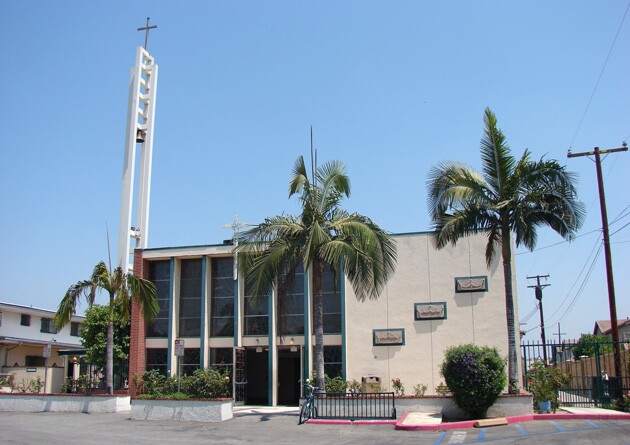

In Partnership with the South El Monte Arts Posse
"East of East" is a series of original essays about people, things, and places in South El Monte and El Monte. The material traces the arrival and departures of ethnic groups, the rise and decline of political movements, the creation of youth cultures, and the use and manipulation of the built environment. These essays challenge us to think about the place of SEM/EM in the history of Los Angeles, California, and Mexico.
_____________________________________________________________
After my home, Epiphany is the place that looms largest in my South El Monte life. It was where I attended elementary school, walking home with my sisters after school in our saddle shoes and plaid jumpers, me carrying my backpack over just one shoulder so as not to look like a nerd. It was the church where we went to Mass every Sunday, and where I received my first Holy Communion and my first Reconciliation in a tiny room with shaggy carpet on the walls. It was where I went to Confirmation classes for two years during my freshman and sophomore years, before being confirmed by Cardinal Roger Mahoney and choosing an obscure saint's name because I needed to be different from all the Agnes's and Bernadette's. (Go, Lutgardis!) It was where I was baptized as an infant, where I went to a funeral and saw my first dead body. It encompassed all of life, from its beginning to its end.
In fact, Epiphany is one of the reasons I call South El Monte my hometown. My parents were both working in downtown Los Angeles. When looking for houses they found a stucco bungalow in South El Monte, very reasonable at 44k, built the same year my mother was born. My mother liked that there was a Catholic school nearby, for the children they still had to come. They bought it, and just like that, Epiphany became my destiny.
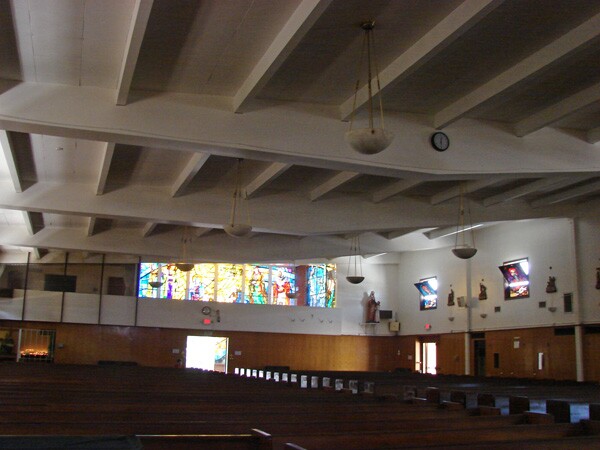
*****
When I attended the school, there were grades 1-8. Recesses were spent playing four-square or hopscotch. In junior high, Chinese jump rope was my preferred pastime: ankles, calves, knees, thighs, underbutts, waists! Two of us would hold the long loop of rubber bands around our bodies while the third girl took her turn jumping, from one side to the next, inside, outside, onto both strands, then off. On "scratchies" you had to be especially careful not to let a strand slip out from under you. For "skinnies" we'd use just one leg, and for "fatties" we'd spread our legs apart. If it was raining we'd stay seated at our desks and play 7UP or watch a Disney movie or "Davey and Goliath" on the TV in the upper corner of the classroom.
Every year we were required to sell World's Finest chocolate bars to help raise money for the school. Hopefully a pitying relative would buy a case or half a case from you, so you weren't having to peddle them one by one. I'd end up eating my fair share, dutifully stuffing a dollar bill into the envelope kept in the refrigerator. I loved the ones with almonds; later there were crispy ones. My sisters and I would dress up in our uniforms and go door to door. Our mom would drop us off at the Alpha Beta supermarket on Durfee and we'd stand outside pitching shoppers. The kid in my class who always sold the most was the one whose family worked at the swap meet. If you sold a lot you'd get prizes. The big one was a trip to Disneyland on a weekday; you could be in Fantasyland while the rest of your sorry classmates were stuck in school, having to wait until you returned before any new material could be covered.
The library was a solitary stucco building past the field, inhabited, it seemed, by the scariest of the nuns. We would do science tutorials on the computers. There were huge headphones too that squeezed your head and you'd listen to a story and answer questions about it. The nuns wore pretty conservative brown habits and wimples. You could see their bangs, but that was it for hair. Sr. Paul Marie was principal and there were a handful of other Bernardine nun teachers. They all lived in a convent behind the school, and you tried to avoid bouncing your basketball over their wall. Once I ran into them while at Disneyland with my family; it was rather disconcerting to see them in plainclothes. I think they were raving about the President Lincoln exhibit.
There were other teachers: Mr. Cannon played guitar for us, including his original "I'm a Mean Teacher"; Mrs. White was the first black person I had any real amount of contact with and I delighted in mimicking her southern accent with phrases I learned from her, such as, "You are slow as molasses," and, "Are you waiting for the cows to come home?"; Ms. DeFrancesco adored pigs and her desk was bedecked with all kinds. I'm Facebook friends with some, including sisters Ms. Llewellyn and Mrs. Spencer, mainstays of the school. Before P.E. class, the boys having been sent out of the classroom, we girls would change into our shorts and navy shirts emblazoned with the golden eagle. Then we'd walk out to the pavement in front of the classrooms and Mr. K would lead us in warm up's, making circles with ours arms and touching our toes. There was no gym, but I never felt the need for one.
The building that had been intended to be a gym instead opened as Epiphany Church in 1956, and as students we attended weekday Masses there. The teachers seated us spaced out from each other, boy-girl-boy-girl. I would hope and fear I'd be put next to a boy I liked and get to hold his hand during the "Our Father." If I was by the outer aisle, I'd imagine I was holding hands with whatever saint was pictured in the stained glass window across from me.
On Sunday mornings, our mother would take us to Mass. The congregation at large was always bisected naturally by language. There were Masses, groups, and events for the English speakers and different ones for the Spanish speakers. Of course, the Mexican culture permeated everything. We celebrated Las Posadas at Christmas time and there were menudo breakfasts in the cafeteria. Every June was the annual parish fiesta where you could win goldfish by throwing ping pong balls into a bowl or do the cake walk. Rides included a big yellow slide you rode down on a brown sack, the bumper cars, the funhouse, and the legendary "Zipper." Vendors would sell buñelos and elotes. A small stage would host bands and groups of children in costume performing traditional Mexican dances.
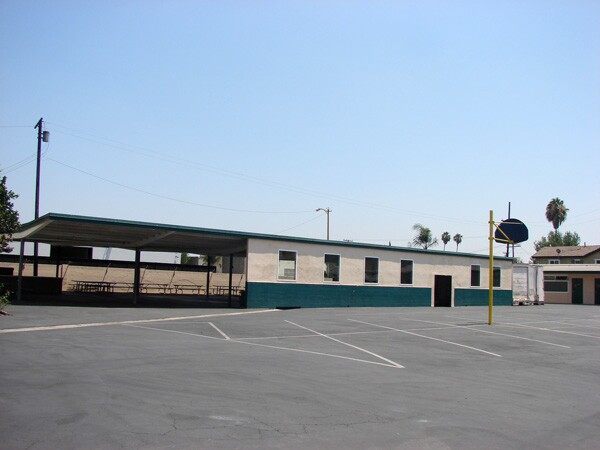
*****
I will always think of Epiphany as having a golden age. This was when Midnight Mass actually started at midnight. When regular Masses, in English too, were well-attended. Really, this was when the beloved Fr. Joe and Fr. Cumberland were in charge. White men from Long Beach and Alaska respectively, who learned Spanish and spoke so well and were so personable that they were adored by both the English and Spanish-speaking parishioners.
Fr. Joe had this conversational sermon style. He would take the microphone down the aisle like we were at a comedy club or lounge and he'd ask the kids questions -- withdrawing, coming back up, ebbing like the tide. I can't remember anything he said but I can picture exactly how he said it: the tone of his voice, his rhythm, and cadence. My grandmother loved his blue eyes. Fr. Joe introduced the Systematic Integral New Evangelization program, or SINE, to Epiphany. People would attend a retreat and then they'd go into what were called "small communities," groups of around 12 people that would assemble at someone's house. They'd pray and discuss some facet of church teaching. These people were the core of the church, the ones who ushered and served Communion at Mass, who could be counted on to volunteer. The regulars. My mother was in a small community and we'd frequently have people over to the house; my sisters and I would play in our rooms with the other members' kids while the adults sat at the dining room table and had their mysterious conversations.
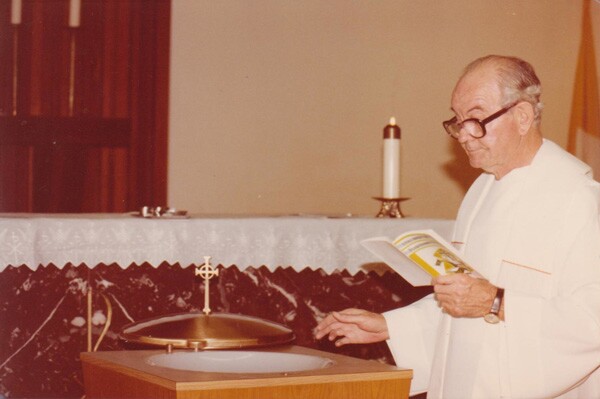
When Fr. Joe got transferred to another church after 16 years, it was a big deal. Because he loved camping, part of his farewell was transforming the field to a campground where we set up tents and stayed overnight. At his farewell Mass, I read a poem I wrote for the occasion. It was my first reading in public of something I had written and it felt special to be given the honor.
Fr. Cumberland was popular too and the priest that I felt the closest connection with. Tall and red-haired, he stood out in a crowd. In grade school I remember he'd come by the classes to talk to us. He had a fun, though more understated sense of humor and was great with kids and teenagers. I've a picture with him standing outside the church, my forehead shiny from the oil they anointed me with at Confirmation. For my quinceañera, I didn't want a big party like some of my friends had. So I got a bright green off-shoulder tea-length dress with lace around the top, got my hair done up in ringlets, put on nylons and high heels, and Fr. Cumberland said the Mass. He was invited to a family party back at our house afterwards, where I changed into shorts and a sleeveless flannel shirt and played musical chairs with my cousins. He would eventually leave too, to go to a nearby church. When I told him I was going to major in Philosophy at college, he expressed concern, saying Philosophy majors often fell away from the church. This was pretty funny considering I was going to Notre Dame.

He and my mother have maintained contact over the years; she's on his mailing list for letters about his trips home to Alaska. Two years ago, he presided over my sister's marriage in San Dimas. As for the subsequent pastors and priests, let's just say they weren't the type you or your grandmother would have a crush on. And some spoke English with such a heavy accent that it was difficult for English-speakers to understand them. The church got a makeover too. The tabernacle was moved from its place under the crucifix, behind the altar, to the side; the priest thought he shouldn't have his back to it. The crucifix, a very large cross with a striking sculpture of Christ, was moved to the side too, replaced with stained glass windows and molding. On the outside of the church, where there had been the three kings on their camels and the words: Sharers in the promise in Christ Jesus through the preaching of the Bible, now there were simply three crowns. It's an odd feeling to have the church you know so well rearranged on you. You find you have nostalgia for the wooden lecterns -- you think these new-fangled glass ones expose the lectors too much. (The beautiful statue of Our Lady of Guadalupe has maintained her place though; on her feast day she gets showered with flowers and some brave soul climbs up a ladder to place a crown on her head.) With so many changes, and so many changes in leadership over the years, some people went to other churches. My family continued attending.
After I graduated from Epiphany in 1993, I went to Cantwell Sacred Heart of Mary High School in Montebello. I didn't drive and none of my Cantwell friends lived that close to me. I mostly hung out with the kids I knew from Epiphany. That was my social life. And when I'd come back from college, for Christmases and summers, I'd meet up with the same crowd. It shifted over the years -- new friends were made and others fell out. But there was always a group. We went to Mass and had our own small community. There was a Youth Group for awhile. Once we had a "lock-in" in the cafeteria -- this consisted of us, boys and girls, being physically locked in the cafeteria overnight (There was a chaperone, I'm sure.). We prayed holding hands with our eyes closed and shared testimonies of faith and struggle. We witnessed more than one teenage pregnancy. I never got close to having that fate, but the group did provide me with more male friendships than I'd ever had or would have again. It wasn't unusual for me to be the only girl in the group, and I enjoyed being thought of as one of the guys. Together we frequented the McDonald's by Golfland, played pool at the Golden Cue and other pool halls, drank, loitered, cruised, went dancing in Hollywood and Los Angeles, bowled, saw movies, threw house parties, and smoked cigars in Santa Monica. We were all over the place. But if we had any home turf, it was Epiphany. We had our ministries. I was in choir and others were lectors or ushers. We hung out talking after Mass. And then I'd get a ride home or somewhere else and my friend would dodge the parking lot's big speed bumps, so he wouldn't have to break as much.
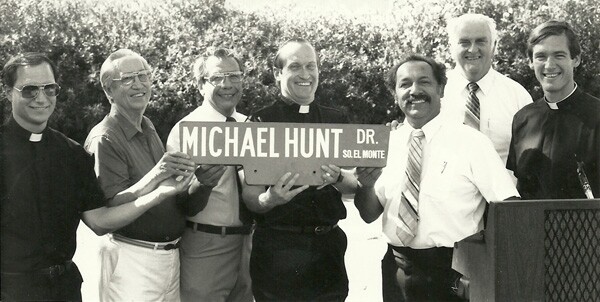
*****
I live across the country now and when I visit South El Monte, I usually concentrate on seeing my family. Epiphany is the one place where I can count on seeing at least a few people I know from the neighborhood. Even now, though a lot of the old crowd doesn't attend anymore, it's still the closest thing I have to a downtown or central marketplace for the city.
Epiphany for me will always be the people that it has brought together in the past and that it continues to gather in its church and school, its hallways and parking lots, its cafeteria and "covered area," where the students eat lunch.
It is Brenda Gutierrez, my classmate in elementary and high school, and cheerful and loyal friend. She'd get dropped off at my house every morning and after school I'd get rides home from her mother. Now Brenda teaches at the school.
It is Dolores Gomez, pianist and vocalist for many years, whose beautiful voice for me will remain the clearest, most basic expression of church music. I sang in her choir on and off, sometimes getting solos; after college I followed her to a church in Montebello.
It is Pat Tudor, a tall elderly woman with thick glasses who won millions of dollars from a lottery ticket she bought at a liquor store on Durfee, only to fix up her house, share the money with her family, and contribute to Epiphany every year, putting up for the food for retreats and snacks for meetings.
It is Alma Casillas, who with her husband would clean the church and the rectory. Her son, my version of Jordan Catalano, was in my small community and I went once to hear his band Good Grief play in their backyard. I still have the band's bumper sticker stuck inside a Hello Kitty case.
My last time at Epiphany, I saw a girl, a woman now, who I used to spend a lot of time with. We do not speak anymore. She has a daughter whom I've never met. At Communion, I saw her walking toward my pew, and I stood up and gave her a hug. This wild girl I'd known, who I'd gone out with all over L.A. and Orange County, "taking it out and chopping it up," she smiled, and there was this quietness and somberness to her that was new. She walked on, and I sat back down in the wooden pew. I listened to the ending of the Mass teary-eyed. It was more than the loss of that relationship that struck me -- it was the end of an entire part of my life.
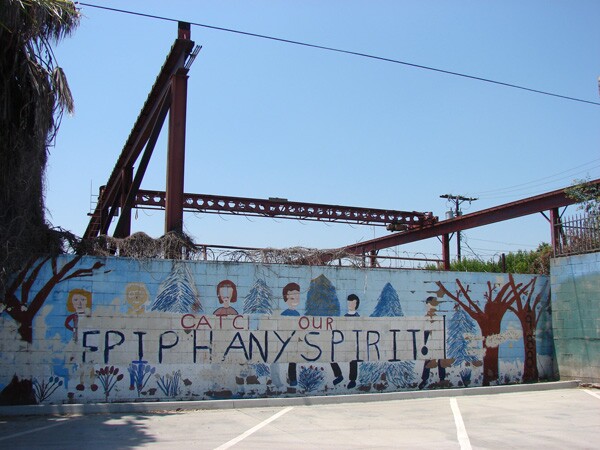
People drive by Epiphany every day. They have to stop at that blinking red light with the crosswalk. They hear the bell chiming, and some cross themselves as they drive by and some don't. It is intensely important for some, not a thought for others. For me, it was the first place in which I was part of a larger community that extended beyond my family. It was youth, and it's still my South El Monte.
This piece was originally published on Tropics of Meta in July 2014.